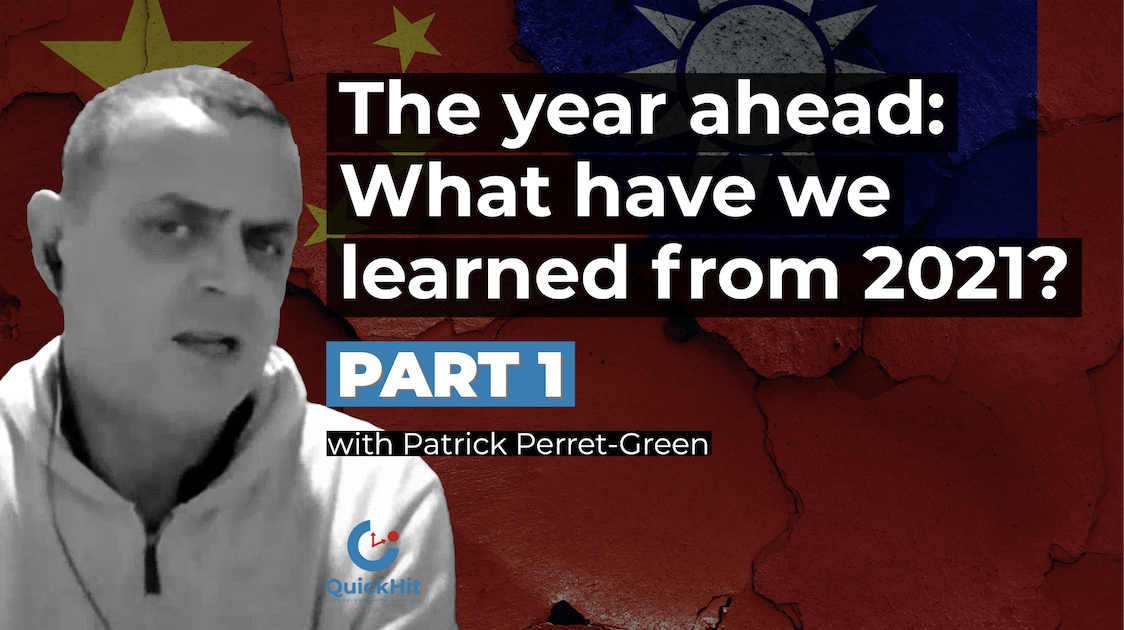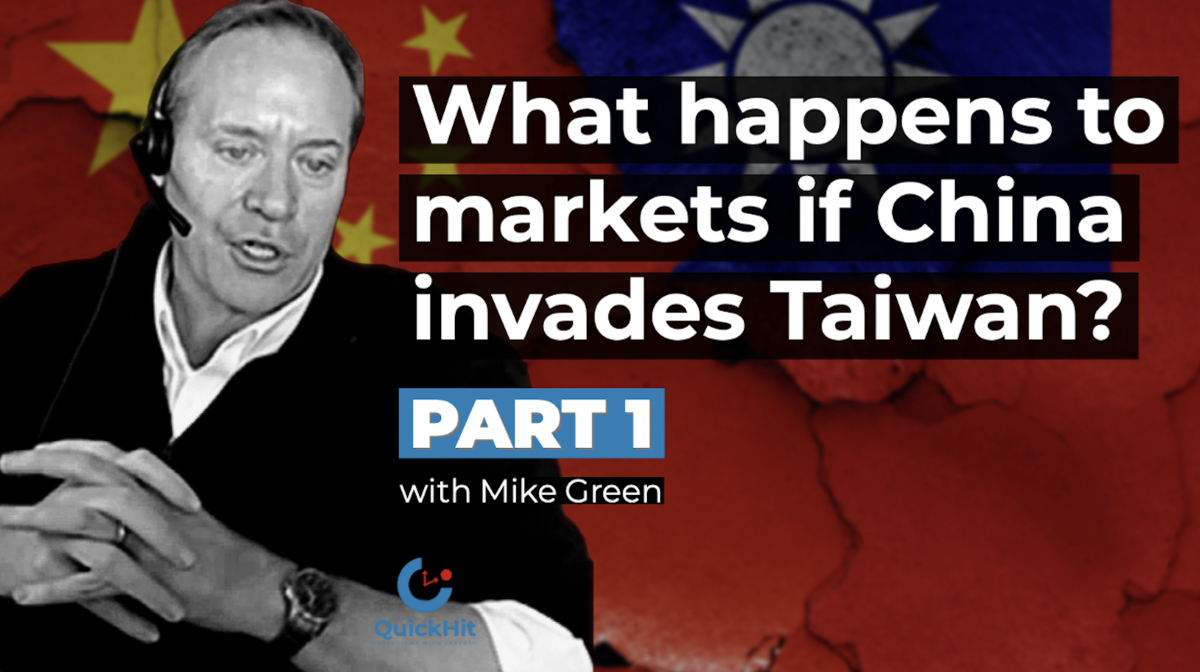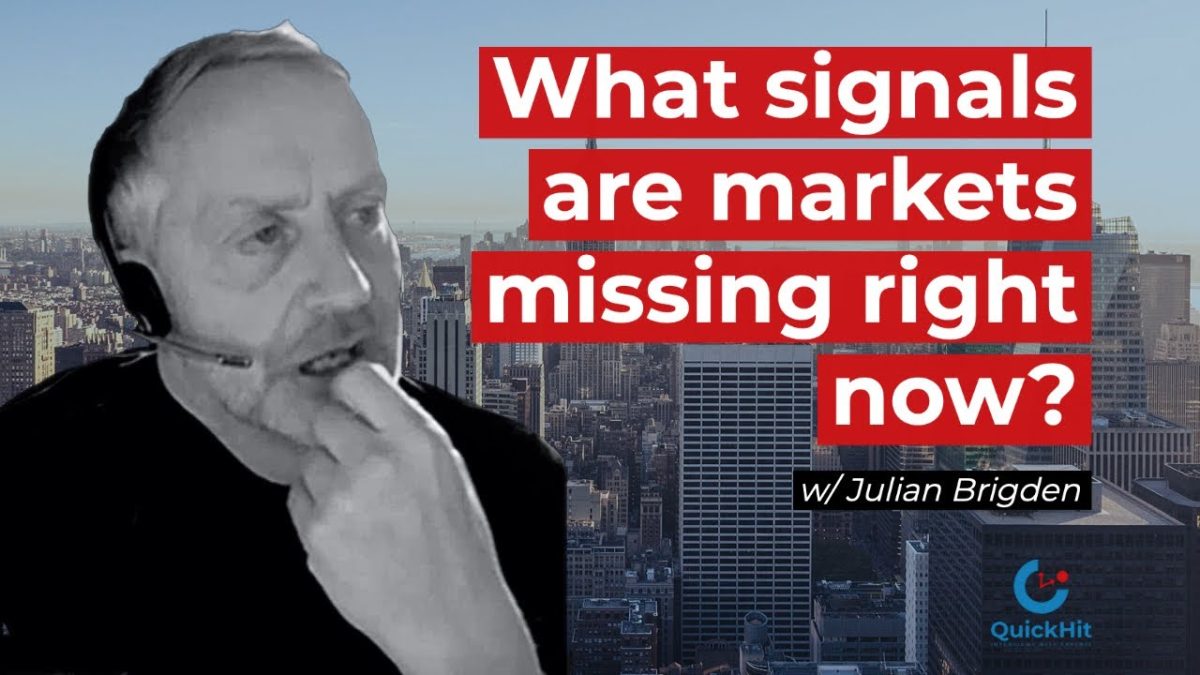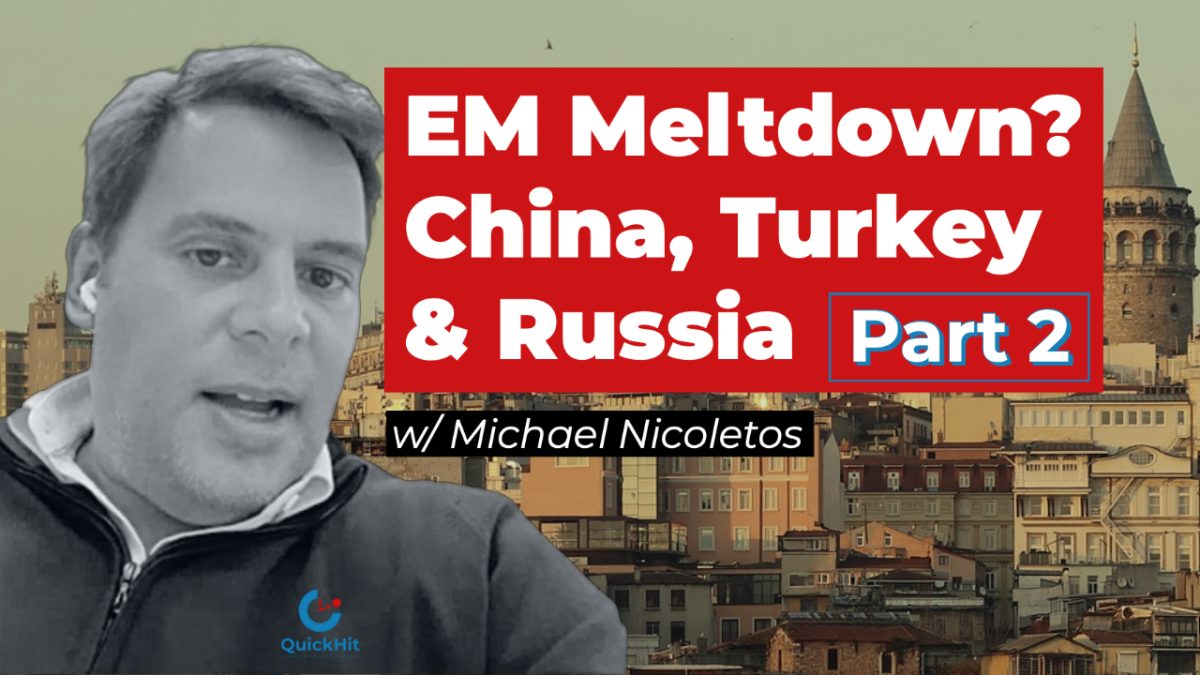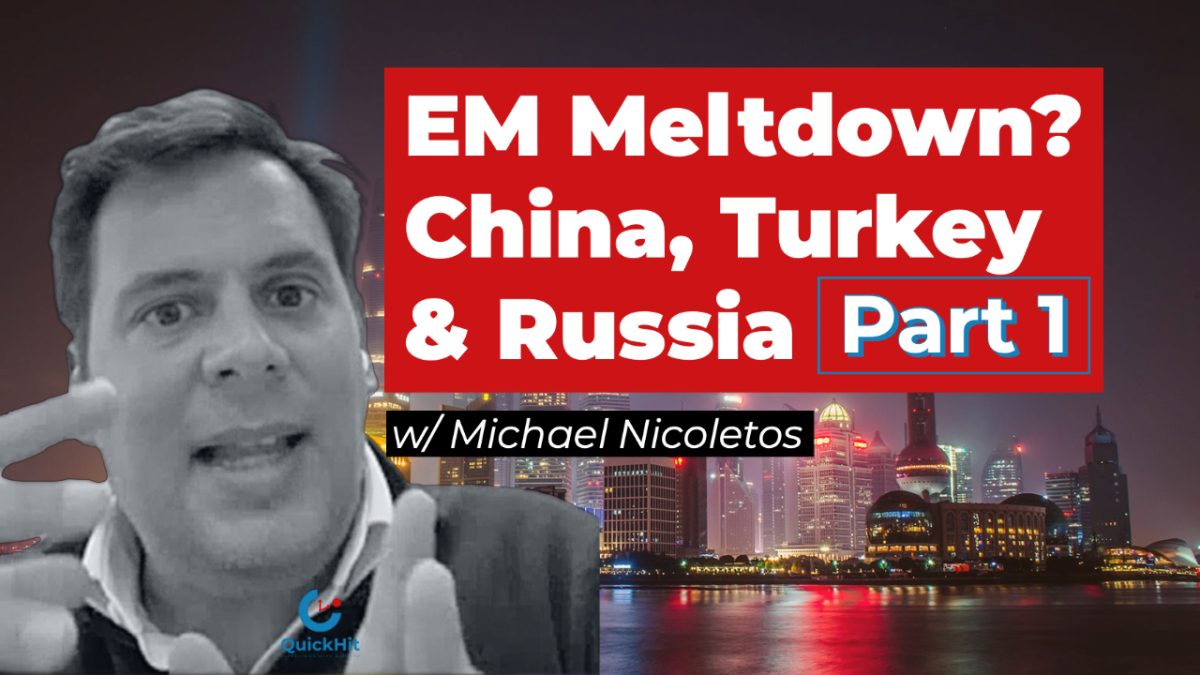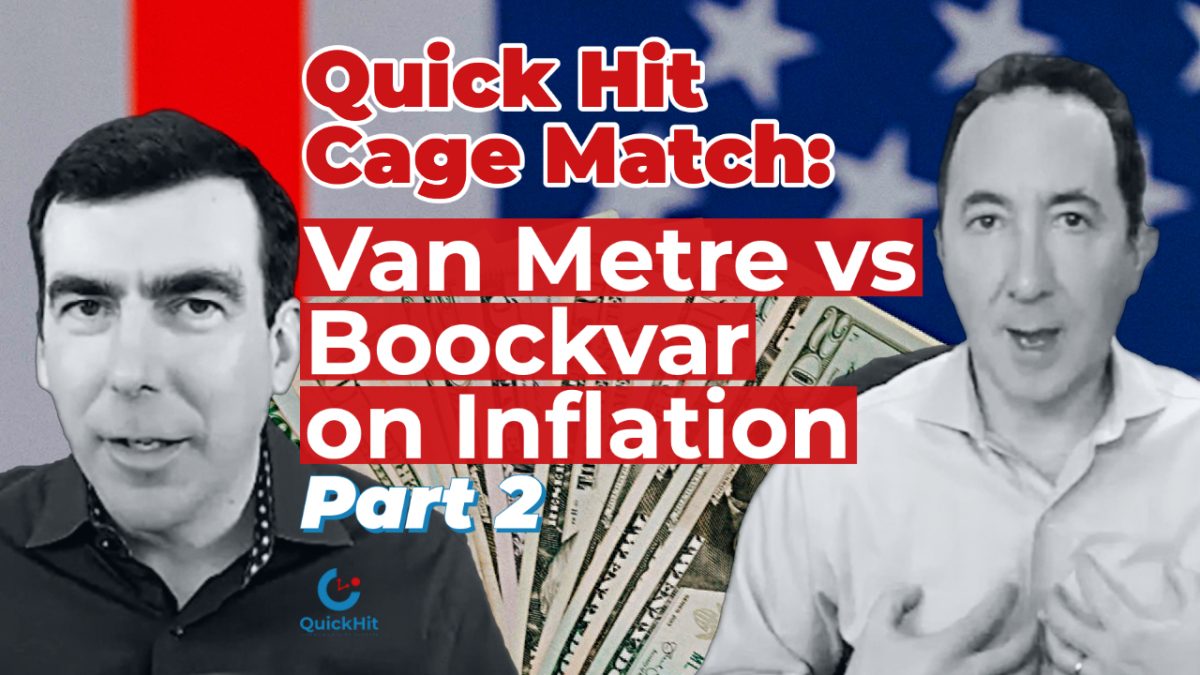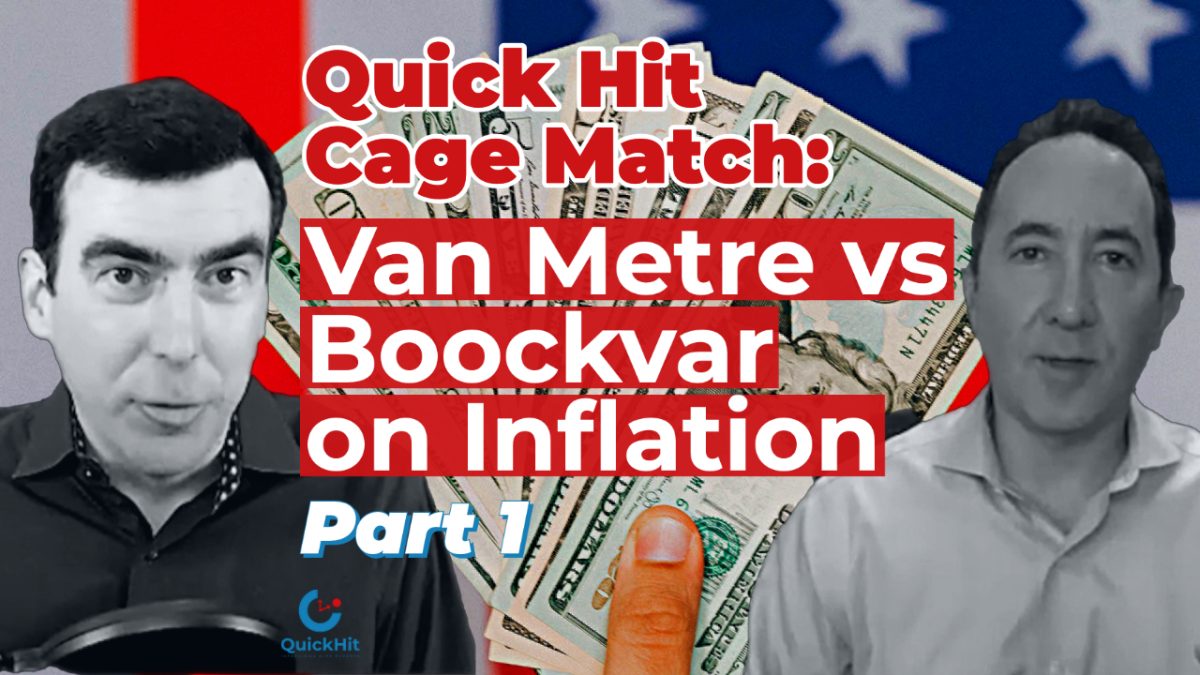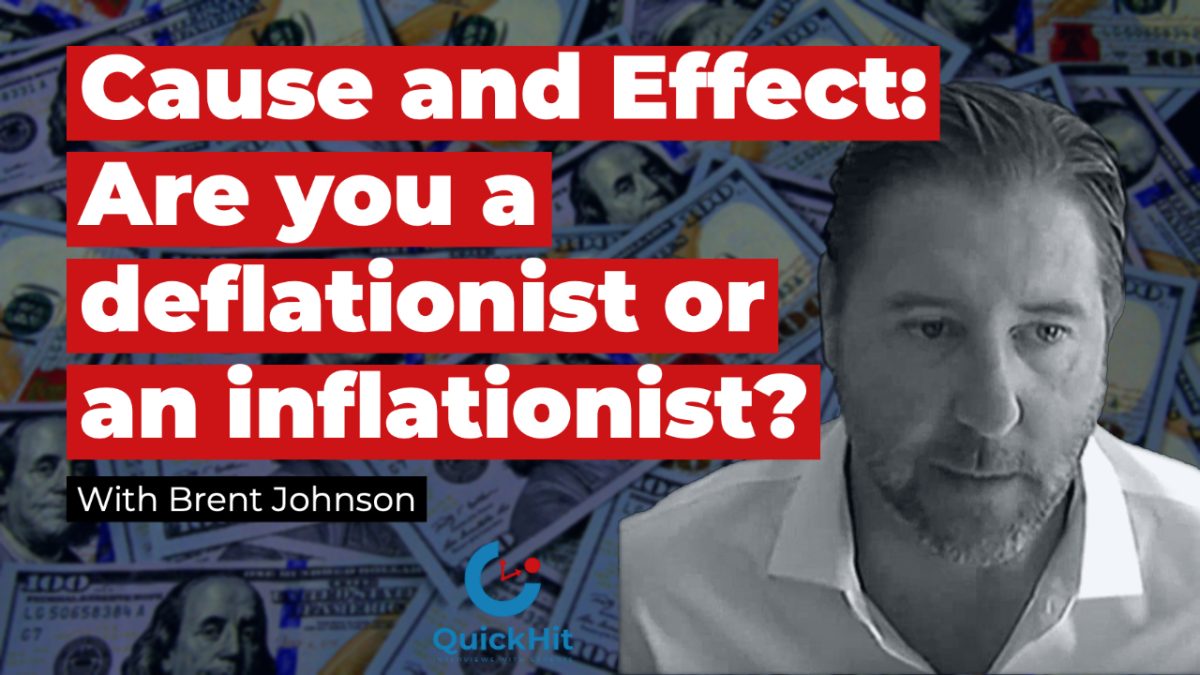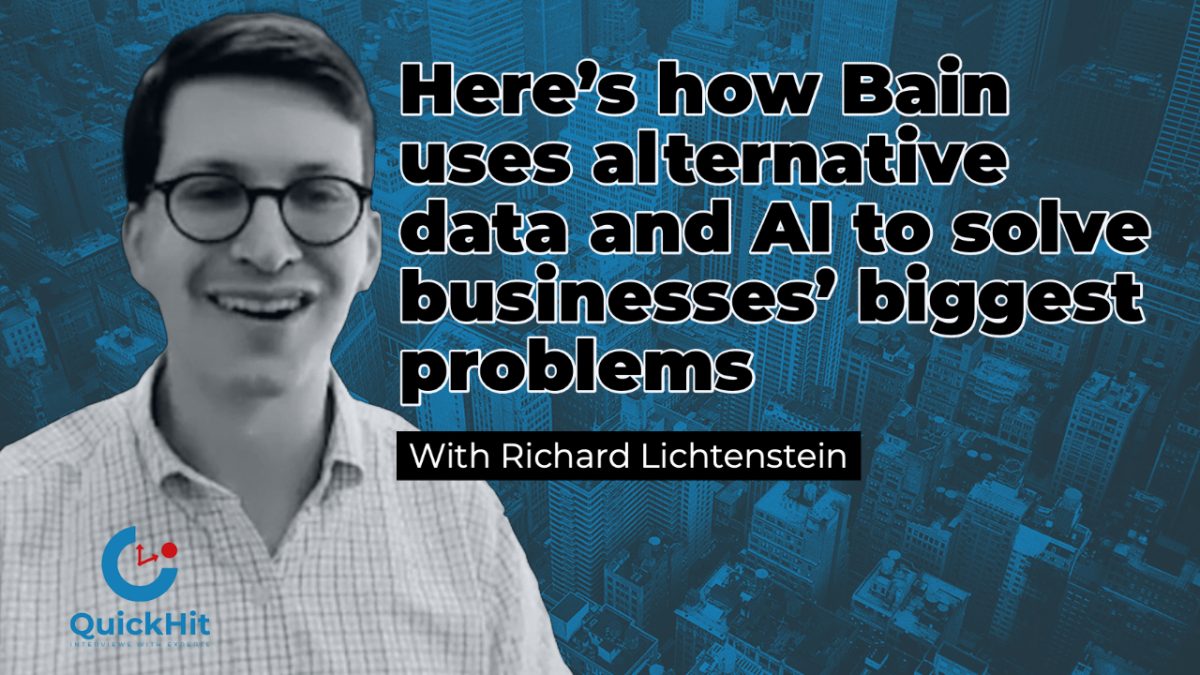Patrick Perret-Green of PPG Macro joins us for a QuickHit episode to reflect what 2022 brings. Patrick got not only the Covid call, but a lot of inflation calls right through the pandemic. As we wrap up 2021, what does he think about right now and how does that set the stage for his view on 2022?
PPG started in 1997 in research where he learned how bank balance sheets work. He also run the strategy for Citi for rates and effects in Asia and at one point worked out in Sydney. And in the past five years now, he’s been focused on the global macro environment.
📊 Forward-looking companies become more profitable with Complete Intelligence. The only fully automated and globally integrated AI platform for smarter cost and revenue planning. Book a demo here.
📈 Check out the CI Futures platform to forecast currencies, commodities, and equity indices
This QuickHit episode was recorded on December 16, 2021.
The views and opinions expressed in this The year ahead: What have we learned from 2021? (Part 1) Quickhit episode are those of the guest and do not necessarily reflect the official policy or position of Complete Intelligence. Any contents provided by our guest are of their opinion and are not intended to malign any political party, religion, ethnic group, club, organization, company, individual or anyone or anything.
Show Notes
TN: So, Patrick, you’ve got not only the Covid call, you’ve gotten a lot of inflation calls right through the pandemic. And as we wrap up 2021, I guess what I’d really like is, what are you thinking about right now and then how does that set the stage for your view on 2022?
PPG: Well, there’s a whole lot of multiple issues. So I was rewatching Powell’s Q&A this morning. And clearly there is the energy side of things. There is the good side of things, the demand for goods, and they are responsible for big chunks. And I was quite surprised by the ECB’s massive upward revision for inflation for 2022 in the press conference earlier on today. But base effects are very powerful. So we always knew we were going to get peak base effects. We’re going to come in around October, November time. Oil average WTI average below about 39 to $40 last October, November. And by January are up to, or early February, we were early 60s. That base effect will tumble out quite dramatically.
I also think that the durable goods effect is also going to tumble out dramatically. We’ve had record purchases, but I remember talking joking with people last year. It was about the middle of last year, and I was saying I was just as an experiment going on ebay and seeing what I could pick a Peloton up for. So everyone got their Peloton or they bought a flat screen TV. They did the house, they did the kitchen because everyone was at home.
And I think when you look at durable goods purchases in the US and this is chart I’ve posted many times on Twitter. They are off the charts and they’re off the charts relative to disposable income as well, which is now falling. Okay, due to inflation as well. But in the US, we’ve also got this remarkable thing that it’s very different to other countries.
So you look at the UK. We had the employees taken out the other day. We’ve now got more people on payrolls than we had prepandemic. Non-farm payrolls are still down 3.9%. And in Europe employment has been much better. So the great retirement, the great resignation seems to be a US phenomenon.
But I think next year the risks are that everyone that goods purchases collapse and pricing power similarly collapses with that. And even things like autos as well will pass. So we know for well that the auto manufacturers have got lots full of 95% completed cars, and the chip shortage is actually a thing. It’s not that the world has run out of chips. There’s some papers recently looking at chip supply.
So the supply chain disruptions are being true. Yes, there’s still log jams with ports in the US, but in Asia, around Singapore, they’ve largely cleared into chain. Yeah, we’ve still got subjects very pandemic risks of problems with changing over ship crews and things like that. But overall, I think that side of things will ease down.
Okay. The pandemic is of pain, but we all know that. And there’s a lot of we’ve got Omicron now, but there is some cause for hope. It’s incredibly infectious. But all the people I know have got it. I don’t know anybody who’s had it really bad. Whereas I know people who even had Delta and they were really late. I don’t know anybody hospitalized, really. But could this be, like a bit of a bushfire?
It goes through very quickly. But actually, then we have the benefit because it’s so infectious. So many people get it. That herd in unity becomes higher. And actually, by February we’re back and everyone not giving a damn.
TN: Which is what I love. I love it. I love it. Let it be. So I hope it happens.
PPG: But let us go. But let’s not forget the underlying reality. People seem to stare in sort of my a rose tinted glasses and look back and think like, oh, wasn’t it wonderful prepondemic? No, it wasn’t. The world central banks weren’t cutting rates in 2019 because we were in good shape and there wasn’t a load of excess capacity. My concern is now that actually we talk about capacity being built. So records for containerships is less.
However, the volume of global trade actually is not particularly higher. It’s more because of disruptions. An empty container has been trapped in places. So people are building more containers and they’re building more factory space. But once the supply chain disruptions come down, then you’re going to be left with even more excess capacity.
TN: Right. Well, it’s the other side of letting all those old containerships and book carriers retire in kind of 2011 to 15. Right?
PPG: I’m still left with an image of a world that, compared to 2019, has more debt, it’s older and the capacity hasn’t gone away. And then we’ve also got the geopolitics and the politics and all that sort of stuff as well.
Watching Powell last night, I was struck by how amazingly sort of confidently was about the outlook for the US economy. Two, how he seemed to have lost all recollection of the effect of the last tightening cycle on what was a much healthier economy. So here we’re talking about, we got a 150 basis points of tightening by the end of 2023.
Okay, tapers. We all knew that’s going to end quickly. It’s going to be done by middle of March, in 10 weeks time.
TN: Just words, Patrick. It’s just words.
PPG: And then they do Redux. And he admitted at the end towards the end that they had their first discussion about the balance sheet. So I think they’ll start balance sheet reduction much sooner. But the problem is if we go back to last time when debt was so much lower, the Fed overtightened.
My reckoning, was they should have only really gone to one of the records. They completely underestimated the impact of balance sheet reduction on liquidity. I did quite a lot of work on the plumbing, and the irony is that the Fed is in charge of a mandatory systems. They’re not a very good plumber. They seem to actually understand how their own system works properly. So you end up being like the repo crisis. No, it’s not QE. We’re just buying bills and then we’re buying coupons. But it’s not QE it’s just liquidity management.
All these various issues and the other aspects I think about inflation is, there’s a lot of similarities with what happened with China in 2008, 2009. China had this. It was only a $7 trillion economy. A trillion dollars of stimulus. M1 was up 40%, M2 was up 30%. And rather than normal lags of six to eight, nine months, M2 growth peaked at the end of 2009 or late 2009. But inflation didn’t peak until the end of 2010, early 2011. So such was the volume of stimulus that came through. It just reverberated along. You dropped a Boulder in a pond?
TN: Sure.
PPG: So the ripples effect just last for much longer. And I think that’s one of the things we’re seeing, but obviously, what we also are seeing is global money growth as a whole has slowed very dramatically. And even when I look at things like excess reserves or where we are now or currency and circulation within the US, the sort of three to six month annualized rates are backed down to rates that they were at pre crisis.
So the year on year base effects are all fading out. And ultimately, unfortunately, most central bankers aren’t monetarists. They seem to have banned monetary economics. Greens bank scrapped M3 in the US. He’s a great scenery as far as I’m concerned.
TN: So when do you see this stuff really taking hold? Is it kind of mid 22 or?
PPG: The second quarter it really picks it. And we got the other side of it. So we got a US that’s doing okay or brilliantly, as far as pounds and the Feds… Europe, that actually is doing all right as well I mean, everyone’s got perpetual downer in Europe. But I think Europe could be the surprise next year.
And we got China, which is everyone still gets on this sugar high. They’re doing stimulus. And I keep on trying to explain to people, it’s not stimulus. This is dialysis.
TN: That’s a great statement.
PPG: I had a long term view on China, and it really goes back to sort of 2014. Once Xi really took control, got rid of all the rivals, started centralizing the power.
And there’s a long term rationale behind that. So, yes, in terms of the Chinese are great at some long term thinking. In other ways, I describe them to people as like, yeah, China is like a linebacker. He’s like 250 pounds. He’s six foot six tall, but unfortunately, he’s got the brain of an 18-year-old.
TN: I think the latter is more accurate, actually. With that in mind, as we move from inflation to say another obvious kind of what’s ahead for 22? What do you see for China in 22? Do you see ongoing stimulus? Do you see a roaring Chinese economy? What does China look like for you in 2022?
PPG: Well, the interesting one is that we look at everything that’s come out of the recent Central Economic Forum, all the going. The whole emphasis is on stability. None of this grandiose stuff about we’re going to be strong. It’s about stability.
Think tank South China Morning Post, which is owned by Alibaba, which is effectively controlled by the state nowadays. So there’s the G 40 Economic Council, whatever they are think tank. But it’s next PVoC governor or deputy governor on it as well. A big article. Nothing is said without less it’s approved.
So they were talking about monetary and fiscal stimulus next year and by that moderately lower interest rates. Central government stimulus because it can’t come from local governments because they’re bankrupt and they’re not getting the land sales revenue and they won’t because the collapse of the real estate.
TN: That’s an important point, though, if you don’t mind holding on the SCMP article for a second. I see people on social media say all the time, well, local governments will always come in with stimulus. But from where? I don’t understand this fallacy, that local governments can always come in with stimulus.
PPG: Well, no, they can’t, because I think even Goldman come out and say that local governments have got hidden debt of about 40 trillion CNY. And all their various financing vehicles. They’re screwed.
They don’t have the money. But over time over the past few years, we’ve probably seen this greater and greater central control. Come on them anyway. They’re more and more dependent on central government forward expenditure. And the rationale comes to this because I think the regime has always recognized that the debt or we’ll keep playing the game of Jenga is unsustainable.
TN: Right.
PPG: And therefore you have to get to a point where we’re going to take some pain. So if you look back at what Xi’s been talking about over the past few years, it’s all about struggle, the Long March. I mean, this is like really going in. That is the story of China. He conveniently forgets to mention, the Long March was actually really a long retreat and basically hardly anybody who started it survived. But that’s completely ignored.
But there is this centralization of power because they know that things have to be dealt with and there will be there’s a potential for trouble. So you become a super authoritarian super, you know, look at all the moves about data.
It’s all about the Chinese government having much more control, much more visibility, a greater ability to snuff out any sort of signs of opposition at the very earliest time.
TN: But my worry there is that China, actually, I think, is becoming fairly brittle. Meaning the Chinese government is becoming fairly brittle.
Under previous regimes, you had a fair bit of flexibility where you had the different levels, not with a lot of autonomy, but with a fair bit of autonomy. Now you have a huge amount of centralization and that creates a fairly brittle government, both economically and politically.
I’m not saying it’s necessarily going to break, but I do worry about what they’re creating.
PPG: Well, I agree with you. I’ve made sneak it past my then investment bank employees. When I came out 2014, I wrote about the stylinization of Chairman Xi.
So you have the centralization of power in one man. But then you also get that fear of slightly Tsar Russia. Nobody wants to be the bearer of bad news. So you had African swine fever. Everyone covered it up. Which was one of my concerns about Covid, because, like you saw in Wuhan, local police shut up the doctors on the 1 January.
And similarly, so you have this culture of paralysis, even pre crisis, Xi comes out and says, oh, we need to reduce coal fire stations. So good party figures, party Chiefs, local party Chiefs. We shut it, shut it down. And then they realize, actually, we haven’t got anything to heat the homes or schools.
Oh, by the way, then we have to divide the energy from the gas from the aluminium shelters to actually do that. You got this sort of, whereas, if you look back to China and Zheng and other leaders, China sort of thrived on its basically Brown envelope culture. We just get it done. Ignore central government. Okay, but at the same time, we are putting loads of cadmium into the ground and killing ourselves. But so be it.
TN: When you look at what’s happening in China domestically, with the economy and with the political structure. I’m also curious about their outward political projection. And I do worry about Northeast Asia, not just China, but Japan, Korea, Taiwan.
And I’m curious, since you have such a historical background, I’m curious what you think about China in terms of political projection, say for 2022. Are you worried that they are going to become aggressive in ’22?

